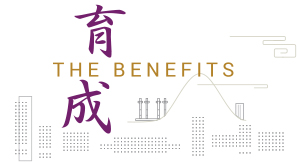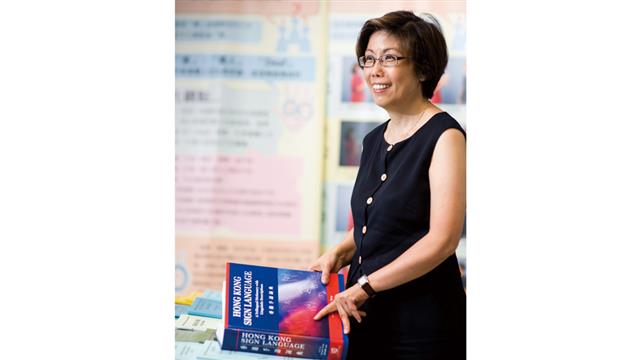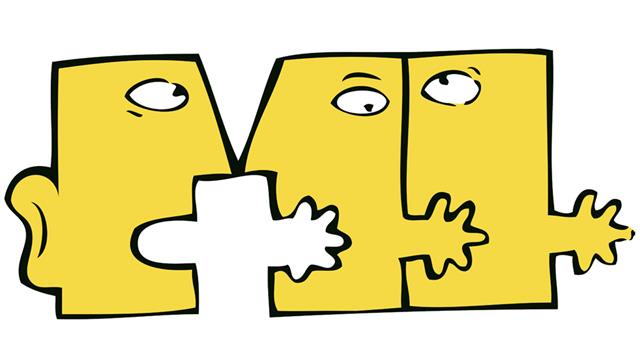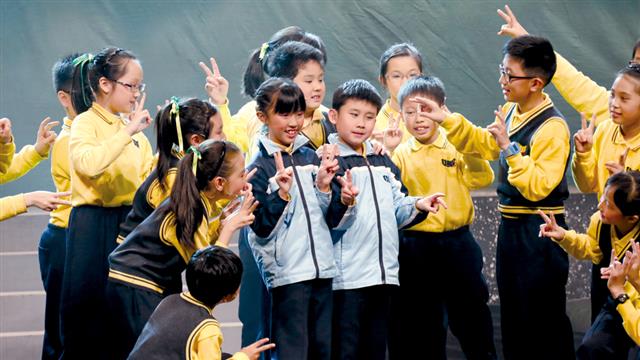Sign Language: A Link between the Hearing and the Deaf Worlds
The philosophy of Prof. Gladys Tang’s research in sign language is readily symbolized by the logo of the Centre for Sign Linguistics and Deaf Studies (CSLDS). The stylized faces represent how sign language can be used as the link between the hearing and the deaf worlds.
Sign language research and training started in 1993 at CUHK after Prof. James Woodward joined the University. Professor Woodward is a phonologist while Professor Tang’s training is in linguistics and second language acquisition. “I was intellectually challenged by Professor Woodward’s claim that sign language has a phonological system that can be studied just like any natural language,” said Professor Tang.
Sign linguistics research and deaf training
The two professors eventually teamed up to document the varieties of Hong Kong Sign Language (‘HKSL’). In 2003, they met again to establish CSLDS and to develop The Asia Pacific Sign Linguistics Research and Training Programme. CSLDS is the first research center and now the hub in Asia that offers training in sign linguistics for Asian deaf individuals and hearing postgraduate students. The research conducted at CSLD delivered, inter alia, the Asian SignBank, as well as dictionaries and teaching materials of the sign language varieties in the Asia-Pacific Region.
Professor Tang says, “The main hurdle back then was (and still is!) the myths and misconceptions surrounding sign language and deaf people.” Since its inception, CSLDS has been very successful in raising awareness of the importance of sign linguistics training and its impact on deaf education in Hong Kong and Asia through research findings and public education.
Nurturing inclusiveness in deaf education
Deafness in children often results in academic failure, poor communication skills and social-emotional instabilities. In 2006, Professor Tang embarked on the seven-year “Jockey Club Sign Bilingualism and Co-enrolment in Deaf Education Programme” to counteract the oralist-only approach in deaf education in Hong Kong.
The Programme involves both deaf and hearing children to receive education in a regular classroom, taught by a hearing teacher using speech and a deaf teacher using HKSL. The Programme has won high acclaim from all stakeholders, hearing and deaf. It has been incorporated by UNSECO’s International Bureau of Education into their database of good practices for inclusive education. The Programme shows that deaf children can become sign bilingual, and learning a sign language does not impede but facilitates spoken language development. It also enables bilateral communication and offers the flexibility of language choice to hearing students.
Barrier free world starts with equality for all in education
Education for deaf students has always been highly restrictive due to problems of communication. Sign linguistics research opens a window of opportunities for these students. Professor Tang hopes that, with bilingual competency in a sign language and a spoken language, deaf children can access a regular curriculum and communicate with hearing people.
The Basics
The Benchmarks







